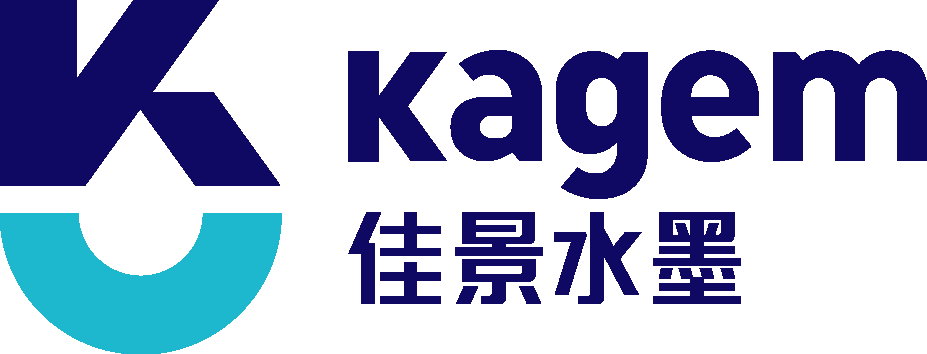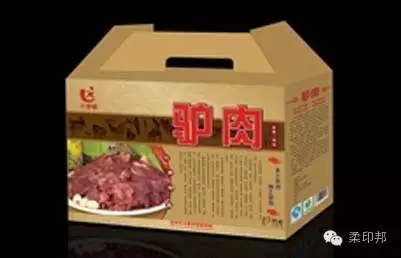
Home About Us Core Strength News Products Case Services Contact Us
Publisher:Kagem Number of visits:229
Carton flexo ink is a green and environmentally friendly printing material without any pollution to the working environment and substrates. In recent years, with the launch of a number of high-line flexo printing presses such as Bobst, Martin, TCY, and Nanhai Dongfang, with the increasing popularity of new sleeve technology, carton screen printing can easily exceed 50 lines, beautifully Straight down the offset printing.
In addition, because of the advantages of high color saturation, short production cycle and low printing cost, cardboard flexo printing is expected to replace offset printing as the first choice for color box printing.

Development of flexible ink
Flexible ink printing Whether it is made of white paper or cardboard paper, the color effect can be reflected. In line with the ever-changing flexo printing technology, ink products are based on high-quality ink, and continuously develop UV/EB-curable flexible inks with higher technology content, which improves the ink absorption of ink and paperboard, making the flexo products more intense and saturated. The level is clear, and the beauty is on the paper. With the continuous development of flexographic printing machines, the demand for water-based inks and various new flexible inks in the packaging and printing industry will be more urgent, and the demand will further increase.
At present, there are nearly 1,000 kinds of cardboard flexo printing machines in China, mainly using water-based ink printing. The annual consumption is more than 50,000 tons, accounting for 25% of total ink consumption. There are two reasons why ink is suitable for carton printing: First, because corrugated cardboard is a loose fiber fabric, it has strong water absorption, and the water-based ink is easy to permeate and dry after being transferred to the surface of the paperboard, and no drying device is needed. Second, because the water-based ink is non-toxic. It is harmless, non-flammable, safe and convenient to use, and low in cost.
Waterborne ink characteristics
The water-based ink is a mixture of aqueous polymer resin and emulsion, organic pigment, water solvent and related additives through physical and chemical processes. It does not contain volatile organic solvents and contains some toxic and harmful substances in solvent-based inks. The main difference between it and solvent-based ink is that the solvent used is not an organic solvent but water, that is, the binder is composed of resin and water, and its environmental protection is more suitable for foods, beverages, medicines and other products with strict hygiene requirements. The composition of the water-based ink is as follows:
The coloring material is a coloring substance of the ink, and most of the organic pigments having complete chromatogram, high color density, and easy to achieve high hiding power are used, such as magenta ink, yellow ink, cyan ink, etc., organic pigments are generally used; white ink is mostly used titanium white powder; black Ink uses carbon black.
The water-soluble or water-dispersible resin is a binder of ink and is an important factor affecting the quality of the ink. The printability of viscosity, adhesion, gloss, and dryness depends on the resin component. There are many types of water-based ink binders, which can be selected according to different occasions and functions. At present, the domestic ink company's research and development of inks are mostly concentrated on the research of binders, including water-soluble binders such as polyvinyl alcohol, hydroxyethyl cellulose and polyvinylpyrrolidone, and alkali-soluble links of soluble resins. And a diffusion binder commonly referred to as a latex containing propylene, ethylene or styrene-butadiene polymer.
From the perspective of formula, the ability of domestic varnish to package color paste is poor, only 50%, and the ability to import resin packaging color paste reaches 80%. Domestic ink has a coarser grain size and is easy to damage the printing anilox roller. The imported ink has finer grain size and forms a good affinity with the anilox roller, which will not scratch the surface of the printing material and affect the printing effect. The solvent of the aqueous ink is mainly water, and a very small amount of alcohol such as ethanol, isopropanol or polyhydric alcohol can be added during use. The addition of alcohols helps to improve the stability of the ink, speed up the drying, and reduce the surface enthalpy. The additives for aqueous inks include amine stabilizers, defoamers, slow-drying agents. The effects are to adjust the pH value, eliminate bubbles and adjust the curing drying time. Colorants and varnishes are important raw materials for ink manufacturing. Our domestic inks are made of imported colorants and varnishes.
When selecting water-based inks, attention should be paid to the viscosity, concentration, fineness, drying speed, abrasion resistance, water resistance and stability of the ink.
Viscosity
Viscosity is the cohesive force of the ink and is the most important control indicator in ink applications. If the viscosity of the ink is too low, it will cause defects such as light color, large dot enlargement, high light spot distortion, and uneven ink transfer. If the ink viscosity is too high, the ink transfer performance of the anilox roller will be affected, and the ink color will be uneven. Not deep, but also easy to cause dirty, paste, blistering, not dry and other ills.
■ Effect of temperature on ink viscosity Temperature has a great influence on ink viscosity.
The influence of workshop temperature on printing quality is shown in Table 5. The relative humidity is preferably 60%~85%.
Viscosity is most sensitive when the temperature difference between winter and summer is large. When the temperature is high, the water evaporates quickly and the drying speed is fast. When operating, it is necessary to pay attention to prolong the drying time or increase the speed of the machine; when the temperature is low, the water evaporates slowly, and the ink is dried slowly. In operation, the drying speed of the ink can be increased or increased. Open the drying unit. When used in winter, it is easy to freeze because the ink is below 0 °C. If the ink is frozen, it can be placed in a room with high temperature, so that it can be dissolved naturally. After mixing evenly, it can be used continuously.
In actual production, when a printing machine with a doctor blade is used, the ink transfer amount when the temperature is too low is not as stable as when the temperature is slightly higher. An increase in the temperature of the ink causes a decrease in viscosity, and as a result, the density of the print is lowered and the ink layer is thinned. To maintain consistent print quality, it is necessary to maintain consistent ink viscosity. The printer must pay great attention to the effect of the ink temperature, and the temperature of the ink to be used should be stabilized at the temperature of the printing shop before printing. This measure is very important, otherwise the ink density in the printing process will have a more obvious change.
■The effect of thixotropic on the viscosity of ink
Thixotropy refers to an increase in fluidity of the ink under external agitation, and the fluidity gradually decreases after the agitation is stopped, and the original state is restored. After the ink is left for a long time, some inks with poor stability are easy to precipitate and stratify. There are also false thickenings. At this time, it can be fully stirred, and after a certain period of stirring, the above problems naturally disappear. When using fresh ink, be sure to mix well before mixing and then adjust for dilution. Or it is expected that after a certain amount of ink is applied to the machine, the viscosity will decrease, and the fluidity of the ink can be improved by the water content in the machine and the thixotropy of the ink. When the printing is normal, the ink fountain is also stirred regularly, especially the ink with a high white pulp content.
PH value of the ink
■The effect of pH on ink viscosity
The pH of another indicator that needs to be controlled in ink application has a normal range of 8.5 to 9.5. At this time, the printing performance of the water-based ink is the best, and the quality of the printed product is the most stable. Since ammonia is constantly volatilized during the printing process, the operator will occasionally add new ink and various additives to the ink, so the pH of the ink may change at any time. The pH of the ink can be easily measured using a standard pH meter. When the pH is higher than 9.5, the alkalinity is too strong, the viscosity of the water-based ink is lowered, the drying speed is slow, the water resistance is deteriorated, and the paste is liable to occur; and when the pH is lower than 8.5, the alkalinity is too weak, the water is The viscosity of the base ink will increase, the ink will be easily dried, blocked on the plate and the anilox roll, causing the plate to be dirty and generating bubbles. The effect of pH on the suitability of aqueous ink printing is mainly reflected in the viscosity stability and dryness of the ink and the clarity of the dot. As the pH increases, the viscosity of the ink decreases and the drying speed also becomes slower.
Ink application experience
Water-based inks often encounter some problems in the process of cardboard printing. The causes and solutions can be referred to as follows:
◆ Adjustment of printing pressure is critical. It includes the pressure between the printing plate and the substrate and the pressure between the anilox roller and the printing plate. If there is a problem that the viscosity of the ink is too high and the ink is dried too fast, the solution is to adjust the pressure, dilute the ink, and add a slow drying agent.
◆ If the ink is dry on the printing plate, if the printing edge is blurred, it may be hot air blowing onto the printing plate. The paper fiber is mixed into the ink to cause electrostatic reaction. The elimination method is to dilute the ink and gradually speed up, cover the inking system, or replace the ink. Install the destaticizer.
◆ Flexo is especially suitable for on-the-spot printing. If it is not real, the cause may be that the viscosity of the ink is too low and the surface of the substrate is not flat. The solution is to use high-viscosity ink and use a good-quality substrate.
◆ The ink accumulates on the plate or the dots are full. The reasons include excessive ink loading, excessive printing pressure, too fast ink drying or too weak ink. The solution is to replace the anilox roller, adjust the pressure, and add a slow drying agent. Or use high color inks.
◆ The reason for poor printing adhesion is that the ink drying temperature is too low, the ink and material have no affinity, and the material surface has a low value due to corona treatment. The solution is to measure the surface tension, increase the drying temperature, replace the ink type or hit The surface of the wool printing material.
This article is reproduced in the "Soft Printing State" WeChat public number. If there is any infringement, please contact us to delete.

Guangdong Jiajing Technology Co., Ltd. (hereinafter referred to as Kagem), founded in 1999, specializes in the R&D, production and sales of water-based inks, water-based varnishes, water-based acrylic resins, water-based acrylic emulsions, pearlescent binders and other eco-friendly water-based printing materials.
Add: Shibu Industrial Zone, Liaobu Town,Dongguan, Guangdong 523000 CHINA
Main Line:0086-769-82318231
Fax:0086-769-82318555
Sales:0086-769-82318668
Fax:0086-769-82311109
E-mail:sales@kagem.net